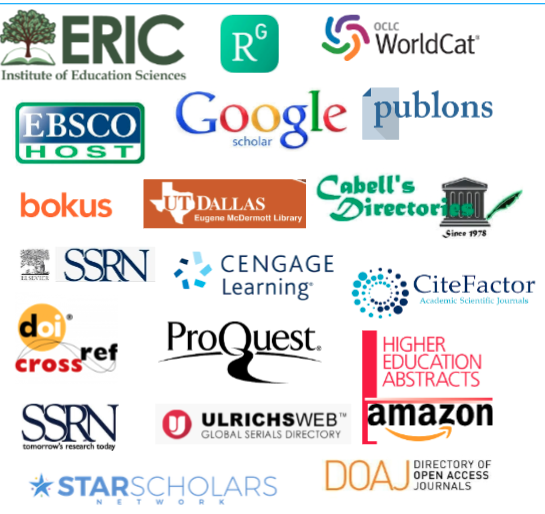Journeying together
Improving parent relations within dual-language immersion programs as a model for cross-cultural understanding and collaboration
Keywords:
dual language immersion, parental involvement, cross-cultural relations, cultural sensitivity, community engagementAbstract
When visiting Dual Language Immersion (DLI) programs within today’s public schools, sociocultural divides and linguistic barriers between parents of each represented language group become quickly recognizable. Should it be a priority of DLI programs to foster intercultural parental relations as a means for improving student learning? If given the opportunity, would DLI parents participate in such initiatives? If successful, could these efforts be implemented beyond DLI programs to impact entire school communities or even communities at large? Drawing upon data gathered from an extensive case study at an elementary school in Virginia, this paper explores the intercultural relations between DLI parents and the need to re-examine the overall purpose of such programs. Findings revealed strong participant motivation to work collaboratively in establishing relationships and supporting DLI learning opportunities that transcend language instruction for their children to include cross-cultural understanding and a commitment to creating more inclusive communities.
Downloads
References
Banks, J. & McGee Banks, C. (2012). Multicultural education: Issues and perspectives. Hoboken, NJ: Wiley.
Bourdieu, P. (1986). The forms of capital. In Richardson, J. (Ed.), Handbook of theory and research for the sociology of education (pp 241-258). New York: Greenwood.
JISE 29 VOL 6, NO. 2
Bryk, A, & Schneider, B. (2003). Trust in schools: A core resource for school reform. Educational Leadership, 60(6): 40-45.
Calderon Espino, M. & Minaya-Rowe, L. (2003). Designing and implementing two-way bilingual programs. Thousand Oaks, CA: Corwin.
Center for Applied Linguistics (CAL). (2016). Dual language program directory [Data file]. Retrieved from http://webapp.cal.org/DualLanguage/DLListing.aspx
Cervantes-Soon, C. (2014). A critical look at dual language immersion in the Latin@ diaspora. Bilingual Research Journal: The Journal of the National Association for Bilingual Education, 37 (1): 64-82.
Chavez-Reyes, C. (2010). Inclusive approaches to parent engagement for young English learners and their families. Yearbook of the National Society for the Study of Education. 109 (2): 474-
504.
Coleman, J. (1990). Foundations of social theory. Cambridge: Harvard University Press. Cummins, J. (2000). Language, power and pedagogy: Bilingual children in the crossfire.
Clevedon, UK: Multilingual Matters.
Epstein, J., et al. (2002). School, family and community partnerships: Your handbook for action,
second edition. Thousand Oaks, CA: Corwin Press.
Freire, P. (1972). Pedagogy of the oppressed. New York, NY: Herder and Herder.
Henderson, A., Mapp, K., Johnson, V., & Davies, D. (2007). Beyond the bake sale: The essential
guide to family-school partnership. New York, NY: The New Press.
Howard, E., Sugarman, J., Christian, D., & Lindholm-Leary, K. (2007). Guiding principles for
dual language education. Washington, D.C.: Center for Applied Linguistics.
Izquierdo, E. (2011). Two way dual language education. In Valencia, R. (Ed.), Chicano school
failure and success: Past, present and future. 3rd ed. (pp 160-172). New York, NY: Taylor &
Francis.
Lindholm-Leary, Kathryn (2001). Dual Language Education. Clevedon, UK: Multilingual
Matters.
Lindholm-Leary, K., Block, N. (2010). Achievement in predominantly low SES/hispanic dual
language schools. International Journal of Bilingual Education and Bilingualism, 13(1): 43-
60.
Palmer, D. (2008). Building and destroying students’ ‘academic identities’: The power of
discourse in a two-way immersion classroom.” Qualitative Studies in Education, 21(6): 647-
667.
Portes, A. (1998). Social capital: Its origins and applications in modern sociology. Annual
Review of Sociology 24: 1-25.
Perez, B. (2004). Becoming biliterate: A study of two-way bilingual immersion education.
Mahwah, NJ: Lawrence Erlbaum Associates.
Pimentel, C., Diaz Soto, L., Pimentel, O., & Urrieta, L. (2008). The dual language dualism:
¿Quiénes ganan?” TABE Journal 10(1): 200-223.
Putnam, R. (1995). “Bowling alone: America’s declining social capital.” Journal of Democracy,
6: 65-78.
Norton, B. (2013). Identity and language learning: Extending the conversation. Clevedon, UK:
Multilingual Matters.
Olivas, E., Jimenez-Castellanos, O. & Ochoa, A. (2011). Bicultural parent engagement, advocacy and empowerment. New York, NY: Teachers College Press.
Scanlan, M., & Palmer, D. (2009). Race, power and (in)equity within two-way immersion
JISE 30 VOL 6, NO. 2
settings. Urban Review, 41(5): 391-415.
Tatum, B. (2003). Why are all the black kids sitting together in the
cafeteria?” And other conversations on race. New York, NY: Basic Books.
U.S. Bureau of the Census. (2010). Quick facts: Harrisonburg, VA [Data file]. Retrieved from
http://www.census.gov/quickfacts/table/PST045215/51660/accessible
Valdés, G. (1997). Dual-language immersion programs: A cautionary note concerning the
education of language-minority students.” Harvard Educational Review, 67 (3): 391-429. Zentella, A. (1997). Latino youth at home, in their communities, and in school: The language
link. Education and Urban Society, 30 (1): 122-130.







